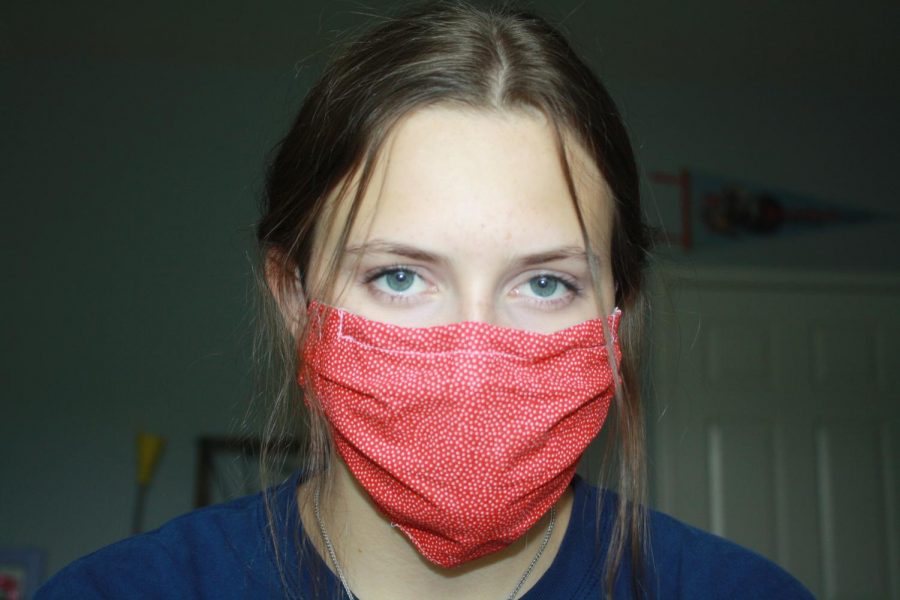Harris County judge issues temporary face mask ordinance among backlash
May 29, 2020
In a statement on April 22, Harris County Judge Lina Hidalgo issued an order requiring anyone over the age of 10 to wear a face mask/covering while in public starting on Monday, April 27. Failure to do so could result in a fine of up to $1,000 with some exceptions like engaging in exercise and consideration for those who may be unable to wear a facial cover.
Hidalgo and her team will allow time for arrangements to be made to locate or construct homemade masks. Masks must effectively cover the nose and mouth but do not necessarily need to be medical masks; shirts, bandanas, or scarves are appropriate and functional choices.
The order, which would remain in place for 30 days calls into question Hildalgo’s authority and what this means for the constitutional rights of many Houstonians. Despite certain assurances being made that before any enforceable action is taken officers will first seek to provide masks, the regulation can be seen as an overreaction exceeding the steps taken even at the state level by Gov. Greg Abbott who is crafting plans to reopen the economy soon.
Hidalgo, while a young judge, is no stranger to backlash as she assumes an upfront and increasingly proactive role in the face of COVID-19. Alongside Houston’s Mayor Sylvester Turner, she has been the face of local government in action as she delivered news of cancellations to beloved community events and worked to minimize the spread of the virus as cases began to rise.
In early April, conservative activist Steven Hotze pursued legal action against Hidalgo’s initial stay-at-home order and was dismissed at the Texas Supreme Court, and now as the county gears up for this new mask order, Hotze again petitions the district court.
“If Judge Hidalgo’s Order is not declared unconstitutional and void, once this virus passes, the rights we are afforded under the Texas Constitution will be forever damaged,” Hotze’s petition reads. “Will we allow Judge Hidalgo’s Order to set precedent for future governmental remedies to viruses or diseases? Will it be a little easier to force people to wear certain items? Today a mask, tomorrow a hazmat suit- where does it stop? Every day Judge Hidalgo’s Order is allowed to stay in place, the liberties of the residents of Harris County are trampled on.”
The order itself specifically requires that in addition to wearing a mask or facial covering, residents must also maintain social distancing measures (six feet of distance between persons in public) as well as washing their hands before and after leaving their homes.
In Hotze’s claims, he states that by enforcing distance requirements, hand washing, and the wearing of a mask, Hidalgo is acting in “ultra vires”. Ultra vires is a Latin phrase that when applied to the law, means that an act has been done in a way that extends beyond the power allotted to an authority. Hotze supports this with evidence that the plan laid out by Hidalgo is contrary to the steps that Gov. Abbot has taken, which should precede any local action.
But as Hidalgo cites multiple times in her order, through the Declaration of a Local Disaster, a county judge is authorized to act as an agent for the Governor and exercise all powers when applied to an appropriate scale to control the movement of people and occupancy of given premises.
Legal and ethical questions aside, the mask debate has been alive for much of the outbreak as people aim to do whatever they can to protect from the spread of disease. On April 3, the CDC (Center for Disease Control) officially released a statement recommending that masks be worn in public, especially in places where community transmission is higher like the grocery store.
The novel coronavirus is spread through droplets, and although the effectiveness of wearing masks has been doubted, it’s generally agreed that minimal protection is better than nothing. And while cloth masks are unable to completely prevent from contracting the virus, they can serve to protect those who already have the virus and are asymptomatic from transmitting it further.
Hidalgo’s move to require masks, while seemingly a large step, is not unprecedented. During the 1918 Influenza outbreak, many cities began to require that masks be worn in places of public gathering. Starting first in San Francisco on Oct. 25, any group of more than two people had to cover their faces with the exception of mealtime.
Then, as it is now, the mask ordinance was a point of contention for many. There was an argument over the legality of requiring masks in public and for those who refused to wear them, low ball fines and even minor jail time was a possibility.
In response to the mixed reactions on enforcing mask-wearing, city officials portrayed masks as being an act of patriotism and they worked closely with the American Red Cross to provide materials and awareness through news presence. With sayings broadcasting a 99% rate of protection against the Influenza virus despite evidence that many materials were not nearly as effective as surgical gauze, there was even encouragement supporting that women wear chiffon veils in an attempt to appeal to their sense of fashion.
A proponent of the ordinance or not, the science behind the mask became less about flattening the curve of infection and more about the symbolism of a nation banding together behind a common villain. The mask was a statement, and the same thing stands true now.
The virus has changed, and the characters have changed, but today still sees a world of people looking for a solution to an invisible problem. On Monday, April 27, masks will become mandatory but as people are left to decide where they stand on the issue, one thing remains true; there’s a long fight ahead to beating COVID-19 and covered or not, people are meeting it face held high.

